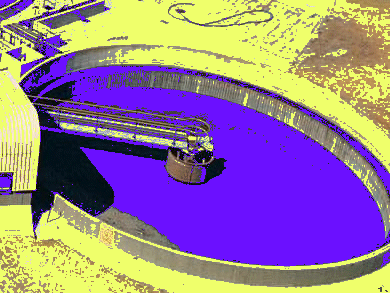David L. Diehl and Timothy M. LaPara, University of Minnesota, Minneapolis, MI, USA, have developed a method that could slow the spread of resistance genes in the environment by reducing their release through treated sewage.
People taking antibiotics can excrete resistant bacteria. Farmers often apply treated wastewater solids, sewage sludge, to their fields as fertilizer. Bacteria in the sludge can share antibiotic resistance genes with other microbes in the environment.
Most treatment plants incubate sludge in digester tanks at 37 °C. Here sewage bacteria decompose organic material and destroy pathogens, but also these are very good conditions for resistant bacteria to survive. Two types of digesters – aerobic with added oxygen, and anaerobic without – select for different populations of bacteria.
The researchers studied five bacterial genes encoding tetracycline resistance and one gene encoding the integrase of class I integrons, which scientists have linked to multidrug resistance. They processed sludge from a nearby treatment facility in lab-scale aerobic and anaerobic digesters at 22, 37, 46, and 55 °C.
Quantitative polymerase chain reaction revealed that in the anaerobic reactor the amounts of antibiotic resistance genes declined with increasing temperature. The effect was most dramatic for the integrase gene: At 55 °C the scientists could remove 99.99 % of it. In contrast, during aerobic digestion, higher temperatures did not substantially change the prevalence of antibiotic-resistance genes.
Raising the temperature of anaerobic digestion at wastewater treatment plants should not be cost prohibitive, because the digesting bacteria produce methane gas that can heat the reactor.
- Effect of Temperature on the Fate of Genes Encoding Tetracycline Resistance and the Integrase of Class 1 Integrons within Anaerobic and Aerobic Digesters Treating Municipal Wastewater Solids,
David L. Diehl, Timothy M. LaPara,
Environ. Sci. Technol. 2010.
DOI: 10.1021/es102765a




